The Future of Customer Service Automation Unveiled
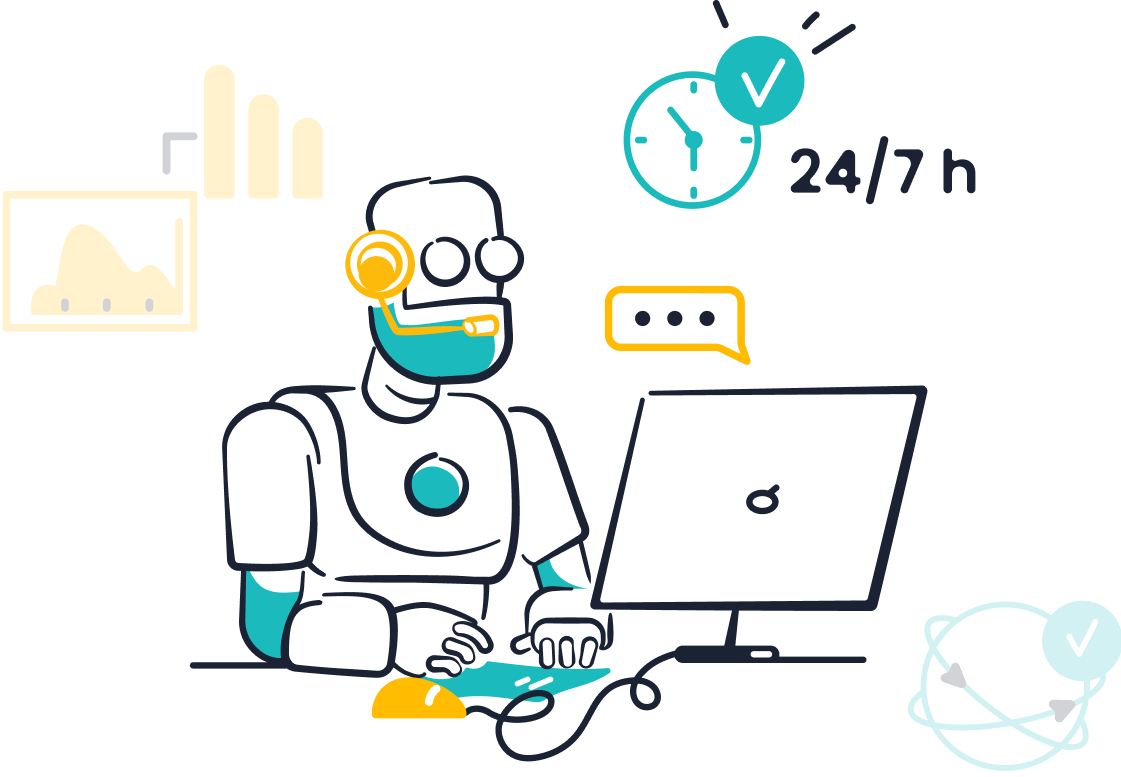
Imagine a world where customer service evolves into a seamless, intelligent experience. By 2025, customer service automation is set to redefine how businesses interact with customers. AI-powered tools already show remarkable results. For instance, companies using AI report up to 90% time and cost savings, while 86% of customers prefer brands that integrate AI into their services. These trends highlight the growing demand for smarter solutions.
Sobot, a leader in customer service innovation, exemplifies this transformation. Its AI chatbot boosts productivity by 70% and operates 24/7, reducing costs and enhancing customer satisfaction. As automation continues to advance, businesses like yours can leverage these technologies to stay ahead.
Emerging Trends in Customer Service Automation

AI-Powered Tools Revolutionizing Customer Service
AI-powered tools are transforming customer service by enabling faster, smarter, and more efficient interactions. These tools, such as AI chatbots and AI agents, handle repetitive queries, freeing human agents to focus on complex issues. By 2025, 80% of companies plan to adopt AI chatbots, while 95% of customer interactions are expected to be managed by AI. This shift reduces costs and improves customer satisfaction.
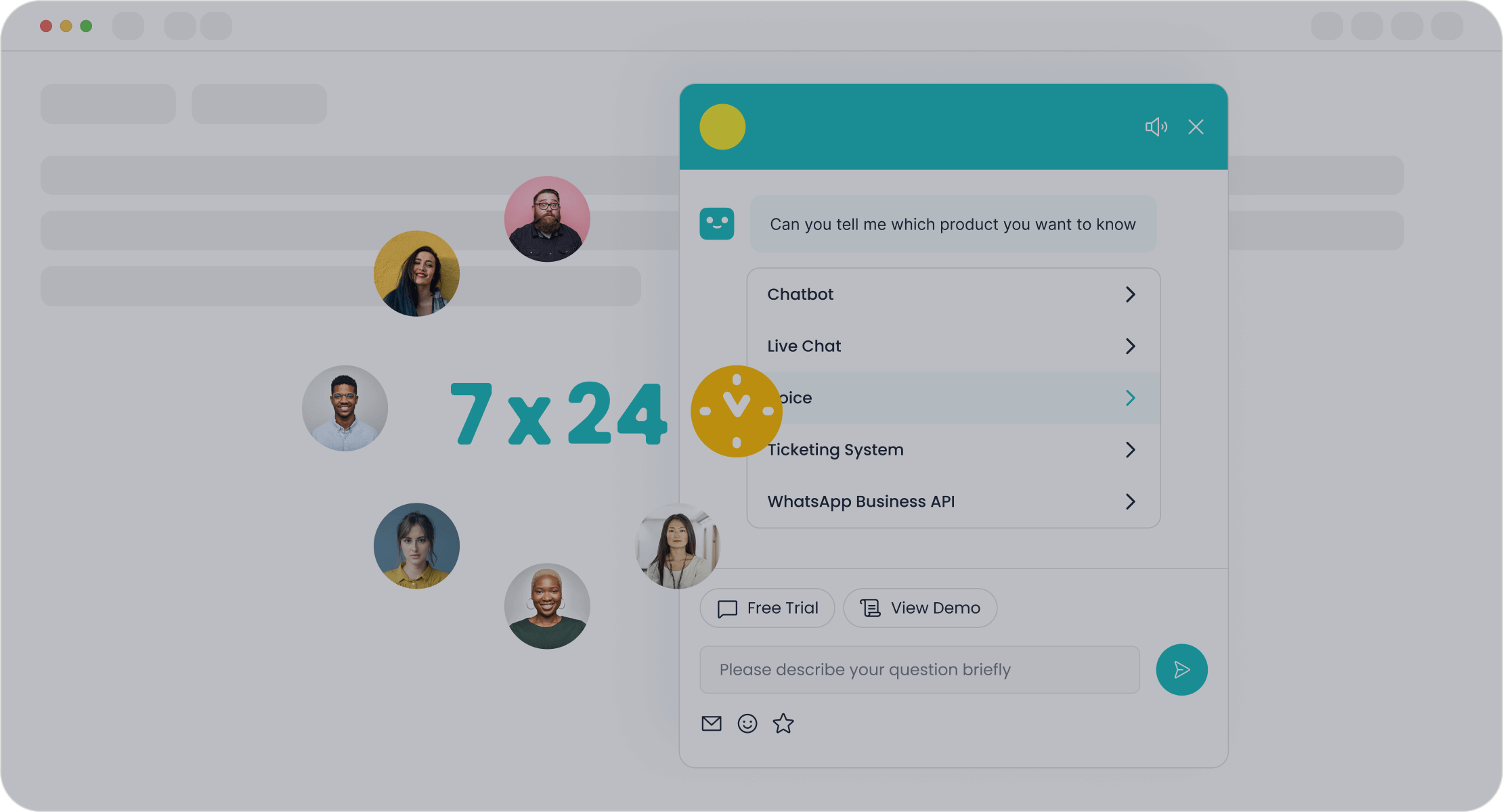
Sobot’s AI chatbot exemplifies this trend. It operates 24/7, solving regular queries autonomously and boosting productivity by 70%. Its multilingual capabilities ensure seamless communication across diverse customer bases. Additionally, AI agents provide real-time assistance, enhancing the frictionless experience customers expect.
The benefits of AI adoption extend beyond efficiency. Decision-makers report up to 95% time savings and believe generative AI improves customer service quality. As AI tools evolve, they will redefine contact center automation, delivering personalized interactions and self-service options that meet rising customer expectations.
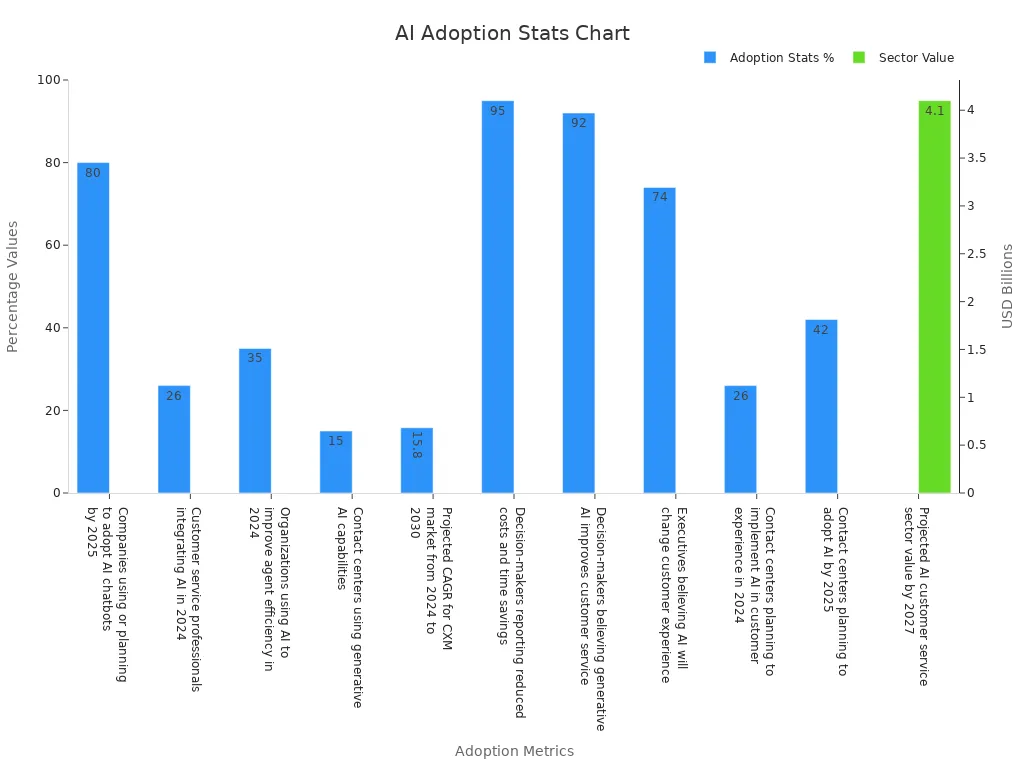
Omnichannel Strategies for Seamless Customer Experiences
Omnichannel strategies are reshaping customer service trends by integrating multiple communication channels into a unified system. Customers now expect a seamless experience across platforms like social media, email, and live chat. Businesses that prioritize omnichannel approaches see three times the revenue growth compared to their peers.
Sobot’s solutions, such as its Live Chat and WhatsApp API, enable multichannel support, ensuring consistent service across customer-preferred applications. For example, Slazenger achieved a 49X ROI within two months by implementing omnichannel strategies, while customer acquisition increased by 700%.
These strategies also improve cross-selling and upselling opportunities. By unifying customer data, businesses can deliver personalized interactions that drive satisfaction and loyalty. Omnichannel automation ensures customers receive real-time assistance, whether they’re browsing products or seeking support, creating a frictionless experience that builds trust and engagement.
Personalization as a Key Driver of Customer Satisfaction
Personalization is no longer optional; it’s essential for customer satisfaction breakthroughs. Customers expect businesses to understand their unique needs and provide tailored experiences. Personalized service increases loyalty and satisfaction, with 85% of customers willing to provide feedback to improve their experience.
Sobot’s AI solutions leverage customer data to deliver personalized interactions. For instance, its AI chatbot uses real-time intent analysis to offer smart self-service capabilities, boosting conversion rates by 20%. Feedback systems track satisfaction scores, helping businesses refine their strategies and align with customer expectations.
Personalization also enhances operational efficiency. By analyzing customer data, businesses can identify pain points and optimize their service delivery. This approach not only restores loyalty but also sets measurable goals for continuous improvement. As technology advances, personalization will remain a cornerstone of customer service automation.
Proactive Engagement: Anticipating Customer Needs
Proactive engagement transforms customer service by addressing issues before they arise. Instead of waiting for customers to reach out, you can anticipate their needs and provide solutions in advance. This approach not only enhances customer satisfaction but also strengthens your brand's reputation.
Proactive strategies rely on advanced technologies like AI and machine learning. These tools analyze customer behavior and predict potential issues. For example, Sobot’s AI chatbot uses real-time intent analysis to identify customer needs and offer tailored solutions instantly. This reduces the number of incoming queries and improves operational efficiency.
| Benefit | Description |
|---|---|
| Operational Efficiency | Proactive customer service minimizes incoming requests by addressing issues before they arise. |
| Competitive Advantage | Brands that anticipate customer needs stand out in the market, gaining a lead over reactive competitors. |
| Customer Loyalty | Satisfied customers are more likely to recommend the business, enhancing its reputation through word-of-mouth. |
| Technology Integration | Utilizing AI and machine learning helps predict customer needs and streamline service delivery. |
| Personalized Support | Tools like IVAs provide tailored assistance, improving customer interactions and reducing agent workload. |
| Proactive Maintenance | IoT technology, as seen in Tesla, allows for real-time monitoring and preemptive problem resolution. |
Proactive engagement also builds trust. When you solve problems before customers notice them, they feel valued. For instance, IoT technology enables real-time monitoring and maintenance. Tesla uses this to fix issues remotely, ensuring a seamless experience for its users. Similarly, Sobot’s omnichannel solutions integrate customer data across platforms, allowing you to deliver consistent and personalized support.
By adopting proactive engagement, you gain a competitive edge. Customers appreciate businesses that prioritize their needs. This approach not only increases loyalty but also encourages positive word-of-mouth recommendations. With tools like Sobot’s AI chatbot, you can automate routine tasks and focus on creating meaningful interactions.
Proactive engagement is the future of customer service automation. It combines technology, personalization, and foresight to deliver exceptional experiences. By leveraging these strategies, you can stay ahead in a competitive market while ensuring customer satisfaction.
Technological Innovations in Customer Service Automation
Conversational AI and Sobot Chatbot: Enhancing Interactions
Conversational AI has revolutionized how businesses interact with customers. It enables natural, human-like conversations, making customer service faster and more efficient. Tools like Sobot’s AI chatbot take this innovation further by offering 24/7 support and multilingual capabilities. These features ensure that customers receive assistance anytime, anywhere, and in their preferred language.
Sobot’s chatbot doesn’t just answer questions; it enhances productivity by 70% through workflow automation. It also provides real-time intent analysis, helping you understand customer needs instantly. With over 300 indicators for customer satisfaction (CSAT) and customizable dashboards, you can monitor performance and identify areas for improvement.
AI-powered chatbots also reduce costs significantly. By automating repetitive tasks, they free up human agents to focus on complex issues. This balance between automation and human interaction improves customer satisfaction and builds trust. As conversational AI evolves, it will continue to redefine contact center automation, making interactions seamless and personalized.
Predictive Analytics for Smarter Customer Insights
Predictive analytics transforms raw data into actionable insights. It uses machine learning algorithms to analyze past behavior and anticipate future needs. This technology allows you to predict customer preferences, enabling proactive engagement and personalized service.
For example, healthcare organizations like Johns Hopkins All Children’s Hospital have used predictive analytics to improve patient care. By integrating real-time data with machine learning, they reduced ICU transfers by 35% and hospital readmissions by 20%. Similarly, businesses can use predictive models to optimize customer service. Sobot’s AI solutions analyze data points to create detailed customer profiles, helping you deliver hyper-personalized experiences.
Predictive analytics also minimizes risks. By identifying potential issues early, you can address them before they escalate. This proactive approach not only enhances customer satisfaction but also improves operational efficiency. With tools like Sobot’s analytics dashboard, you can track trends and make data-driven decisions to stay ahead in a competitive market.
Robotic Process Automation (RPA) for Operational Efficiency
RPA streamlines operations by automating repetitive tasks. It empowers customer self-service, allowing customers to resolve issues without human intervention. This reduces response times and enhances satisfaction. For instance, RPA can automate initial interactions and route inquiries efficiently, ensuring that customers get the help they need quickly.
| Efficiency Aspect | Description |
|---|---|
| Empowering Customer Self-Service | RPA enables 24/7 self-service tools for customers, enhancing satisfaction and freeing agents. |
| Accelerating Response Times | RPA improves response times by automating initial interactions and routing inquiries efficiently. |
| Minimizing Human Error | RPA reduces errors in repetitive tasks, ensuring accuracy and building customer trust. |
| Real-World Impact | Companies report improved efficiency and customer satisfaction after implementing RPA. |
Sobot’s AI solutions integrate RPA to enhance operational efficiency. By automating workflows, they reduce human error and improve accuracy. This not only saves time but also builds trust with your customers. With advanced automation, you can ensure seamless conversation transfers across multiple channels, creating a unified and efficient customer service experience.
Voice AI Integration in Modern Call Centers
Voice AI is transforming modern call centers by enhancing efficiency, improving customer satisfaction, and reducing operational costs. This technology uses advanced speech recognition and natural language processing to deliver real-time, human-like interactions. By integrating Voice AI, you can streamline operations and provide faster, more accurate responses to customer inquiries.
Key Benefits of Voice AI in Call Centers
Voice AI offers several advantages that make it indispensable for modern customer service operations:
- Higher Capacity Limits: Voice AI can handle multiple calls simultaneously, ensuring no customer waits in a queue.
- Lower Costs: Automating routine tasks reduces the need for additional agents, saving resources.
- Enhanced Control: Voice AI allows you to monitor and improve customer interactions, ensuring consistent service quality.
Impact on Performance Metrics
The integration of Voice AI significantly improves call center performance. It enables real-time evaluations of agent performance, helping you identify training opportunities and make data-driven decisions. The table below highlights how Voice AI enhances key metrics:
| Metric | Impact of Voice AI |
|---|---|
| Agent Performance | Real-time feedback helps agents improve their skills and deliver better service. |
| Operational Efficiency | Automated workflows reduce response times and increase productivity. |
| Customer Satisfaction | Faster resolutions and personalized interactions lead to higher satisfaction scores. |
Real-World Applications
Voice AI is already making a difference in various industries. For example, healthcare providers use it to schedule appointments and send reminders, while retail businesses leverage it for order tracking and customer support. Sobot’s Voice Call Center solution exemplifies this innovation. It offers features like real-time speech recognition, drag-and-drop IVR, and AI-driven insights. These tools empower you to deliver seamless, personalized experiences across all customer touchpoints.
Tip: Implementing call center analytics software alongside Voice AI can further enhance operational efficiency. It provides actionable insights that help you optimize workflows and improve service delivery.
Why Voice AI is the Future
Voice AI is not just a trend; it’s a necessity for businesses aiming to stay competitive. It reduces human error, ensures 24/7 availability, and adapts to customer needs in real time. By integrating Voice AI, you can transform your call center into a hub of efficiency and innovation. Sobot’s solutions, designed with scalability and security in mind, make this transition seamless.
Incorporating Voice AI into your customer service strategy ensures you stay ahead in a rapidly evolving market. It’s time to embrace this technology and redefine how you connect with your customers.
Strategic Implications for Businesses
Leveraging Automation to Improve Customer Experience
Automation has become a cornerstone for improving customer service. By integrating AI-powered tools, businesses can enhance customer interactions and streamline operations. Omnichannel integration, for example, ensures seamless communication across platforms, while auto-analysis of touchpoints boosts service efficiency. Hyper-personalized interactions build trust, and proactive support increases loyalty.
Sobot’s AI chatbot exemplifies how automation transforms customer service. It operates 24/7, handling repetitive queries and enabling self-service options. This reduces response times and improves customer satisfaction. Additionally, tools like Sobot’s Live Chat unify multichannel communication, ensuring consistent service delivery.
| Evidence Type | Description |
|---|---|
| Customer Feedback Importance | 79% of buyers consider online reviews important before making a purchase. |
| Survey Participation Improvement | SogoCX helped TCESC double survey participation rates from 45% to 90%. |
The implementation of SogoCX at TCESC highlights the power of automation. By using auto-generated surveys, they collected real-time feedback, improving training programs and satisfaction levels. These examples show how automation optimizes customer journeys and enhances the overall customer experience.
Boosting Efficiency with Scalable AI Solutions
Scalable AI solutions allow businesses to adapt quickly to changing demands. Metrics like process efficiency, error reduction, and response times illustrate AI’s impact on workflows. For example, the AI Readiness Index (AIRI) evaluates organizational preparedness for AI adoption, while the Data Readiness Index (DRI) assesses data quality. These tools help businesses identify gaps and improve AI deployment.
| Metric Type | Description |
|---|---|
| Quantifying Performance Improvements | Metrics like process efficiency, error reduction, and response times showcase AI's impact on workflows. |
| Validating Financial Returns | Metrics such as ROI, cost savings, and revenue enhancements link AI initiatives to financial outcomes. |
| Enhancing Customer Experiences | Customer-centric metrics quantify improvements in service delivery and satisfaction, crucial for competitiveness. |
Sobot’s AI solutions, such as its chatbot and Voice Call Center, demonstrate scalability. These tools automate workflows, reduce human error, and improve accuracy. By leveraging AI-driven automation, you can achieve measurable gains in efficiency and maintain a competitive edge.
Empowering Agents with AI-Driven Tools
AI-driven tools empower agents by enhancing their productivity and enabling them to focus on complex tasks. Studies show that support agents can handle 13.8% more inquiries per hour with AI assistance. Generative AI tools also increase throughput by 66% for business users.
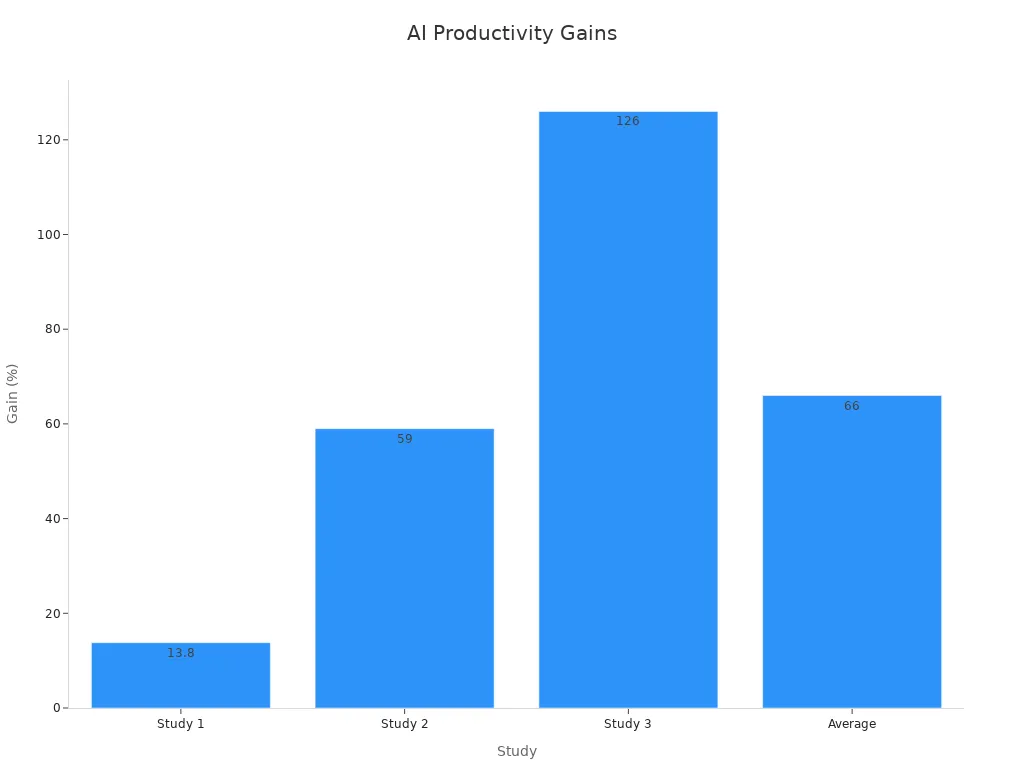
Sobot’s AI agents assist human representatives by providing real-time insights and automating routine tasks. This collaboration improves workflow automation and ensures faster resolutions. By empowering agents with AI, you can enhance customer satisfaction and optimize customer journeys.
Tip: Combine AI tools with training programs to maximize agent performance and deliver exceptional customer service.
Balancing Automation with Human-Centric Service
Automation has transformed customer service, but human interaction remains essential. Customers value empathy and understanding, which only human agents can provide. Striking the right balance between automation and human-centric service ensures you meet customer expectations while maintaining efficiency.
Why Balance Matters
Automation excels at handling repetitive tasks. It reduces response times and improves operational efficiency. However, some situations demand a human touch. For example, resolving emotional or complex issues requires empathy and critical thinking. According to a PwC study, 82% of U.S. consumers want more human interaction in customer service, even as automation grows.
Tip: Use automation to handle routine queries and free up agents for tasks requiring emotional intelligence.
How Sobot Helps You Achieve Balance
Sobot’s AI chatbot operates 24/7, managing repetitive queries and providing instant responses. It improves productivity by 70% and reduces costs by up to 50%. Meanwhile, Sobot’s Live Chat empowers agents with real-time insights, enabling them to deliver personalized support. This combination ensures you provide efficient yet empathetic service.
| Automation | Human-Centric Service |
|---|---|
| Handles repetitive tasks | Resolves complex issues |
| Operates 24/7 | Provides empathy and understanding |
| Reduces costs | Builds trust and loyalty |
Best Practices for Integration
- Train Your Team: Equip agents with tools like Sobot’s AI copilots to enhance their performance.
- Monitor Feedback: Use customer satisfaction scores to refine your approach.
- Blend Automation and Empathy: Let AI handle routine tasks while agents focus on meaningful interactions.
Balancing automation with human-centric service creates a seamless experience. Customers feel valued, and your business gains a competitive edge. With tools like Sobot’s AI chatbot, you can achieve this balance effortlessly.
Future Outlook for Customer Service Automation

Predictions for Automation Beyond 2025
The future of customer service automation promises transformative changes. AI will play a central role in automating customer interactions, enabling faster and more personalized responses. Businesses will need to focus on trust-building strategies to retain customer loyalty. Service functions will evolve into strategic growth engines, leveraging data for predictive insights and revenue generation.
| Prediction/Trend | Description |
|---|---|
| AI Integration | AI will automate more customer service issues, requiring businesses to provide quick, personalized, and accurate responses. |
| Trust Building | Trust is essential for customer loyalty; organizations must focus on clear communication and consistent delivery to earn trust. |
| Service as Growth Engine | Service functions will shift from cost centers to strategic growth engines, leveraging service data for predictive insights and revenue opportunities. |
Generative AI will boost labor productivity by 40%, especially in customer service and software development. Hyperautomation-enabling software is projected to reach $600 billion by 2025, while AI-driven automation could contribute $13 trillion to the global economy. These trends highlight the growing importance of AI in shaping customer service strategies.
Challenges in Adopting Advanced AI Technologies
Adopting advanced AI technologies comes with challenges that businesses must address. Data privacy remains a top concern. Companies must ensure customer data is handled securely and complies with regulations like GDPR. Bias in AI algorithms poses another challenge. AI systems must avoid perpetuating biases based on race, gender, or age.
| Challenge | Description |
|---|---|
| Data Privacy | Ensuring customer data is handled securely and in compliance with regulations is paramount. |
| Bias in AI Algorithms | AI systems must be designed and trained to avoid perpetuating biases based on race, gender, or age. |
| Job Displacement | As AI automates certain tasks, companies must prioritize reskilling and upskilling their workforce. |
| Preserving the Human Touch | AI should complement human agents, not replace them; balancing automation and human interaction is crucial. |
Preserving the human touch is equally important. AI agents can handle repetitive tasks, but human agents excel at resolving complex issues. Balancing automation with empathy ensures customer satisfaction and builds trust. By addressing these challenges, businesses can unlock the full potential of AI-driven automation.
Opportunities for Businesses to Stay Competitive
Automation offers significant opportunities for businesses to remain competitive. Low-code automation solutions enable quick workflow deployment, reducing time to value. Over 90% of workers report increased productivity with automation tools, while 85% say these tools enhance team collaboration.
Organizations that invest in automation experience cost savings and productivity improvements. An effective strategy leads to increased efficiency, accuracy, and improved customer experience. For example:
- Cost savings through streamlined operations.
- Enhanced efficiency and accuracy in workflows.
- Improved customer experience as a key competitive advantage.
Sobot’s AI solutions, such as its chatbot and omnichannel support tools, empower businesses to deliver seamless self-service options and personalized interactions. These tools help you stay ahead in a rapidly evolving market while ensuring customer satisfaction. By embracing automation, you can transform your contact center automation into a strategic growth engine.
Ethical AI Practices in Customer Service
Ethical AI practices ensure fairness, transparency, and accountability in customer service automation. These principles protect customers from discrimination and misuse of data while fostering trust and satisfaction. When AI systems operate ethically, they create a secure environment where customers feel valued and respected.
To maintain fairness, AI algorithms require diverse data sets during training. This approach minimizes biases and ensures equal treatment for all customers. Regular audits of AI systems further enhance accountability, identifying and addressing potential issues before they impact service quality. Transparency plays a key role in building trust. Customers appreciate knowing how AI systems work and how their data is used. For example, Sobot’s AI chatbot operates with clear guidelines, ensuring ethical interactions while delivering accurate and personalized responses.
Ethical AI also reduces legal and regulatory risks. Companies that prioritize fairness and transparency avoid fines and reputational damage. More importantly, ethical AI fosters long-term customer loyalty. When customers trust your brand, they are more likely to return and recommend your services. This strategic focus on ethics not only protects your business but also drives sustainable growth in an AI-driven market.
Qualitative benchmarks help evaluate the social impact of AI systems. Case studies and stakeholder consultations assess adherence to ethical principles like fairness and justice. For instance, involving diverse stakeholders in AI development ensures that systems align with societal values. Sobot integrates these practices into its solutions, offering tools like its AI chatbot and Voice Call Center that prioritize ethical standards while enhancing customer experiences.
By adopting ethical AI practices, you can transform customer service into a trust-building engine. These practices ensure fairness, transparency, and accountability, creating a foundation for success in a competitive market. Ethical AI is not just compliance; it’s a commitment to delivering meaningful and responsible customer interactions.
Actionable Strategies for Staying Ahead
Investing in AI Solutions like Sobot Chatbot
Investing in AI solutions is essential for businesses aiming to stay competitive in a rapidly evolving market. Tools like Sobot Chatbot demonstrate how cutting-edge AI solutions can transform customer service. By automating repetitive tasks, the chatbot reduces inbound discussions by 20% and achieves a 96% positive feedback rate. Its ability to resolve 22.2% of self-service questions enhances efficiency while maintaining a 99% customer happiness rate.
| Metric | Result |
|---|---|
| Reduction in inbound discussion | 20% |
| Positive feedback rate | 96%+ |
| Customer satisfaction rate | 95% |
| Problem resolution rate | 85% |
| COD collection rate | 40% increase |
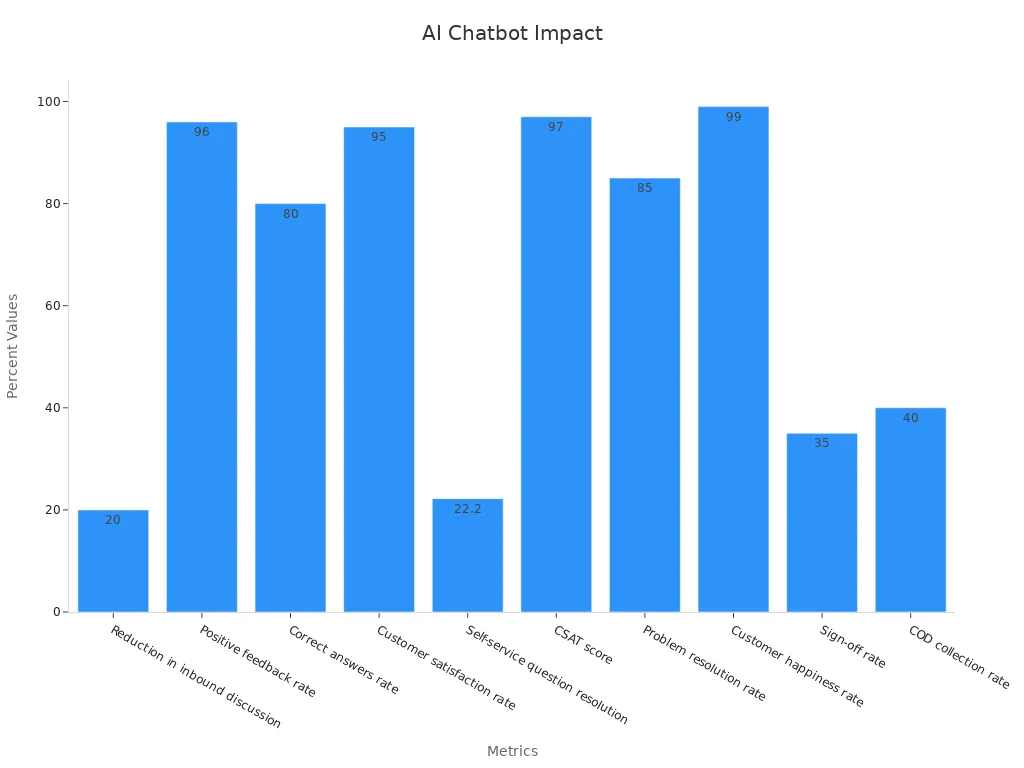
Sobot Chatbot also supports multilingual communication and operates 24/7, ensuring customers receive assistance anytime. These features not only improve customer satisfaction but also drive a 35% increase in sign-off rates. By integrating AI agents into your contact center automation strategy, you can enhance operational efficiency and deliver personalized experiences that build loyalty.
Training Teams to Collaborate with AI
Training your team to work effectively with AI ensures seamless integration and maximizes the benefits of automation. A structured training program can improve AI literacy and practical skills, enabling employees to use tools like Sobot’s AI agents efficiently. For example, implementing AI search bots has boosted conversion rates by 6%, while speech-to-text AI has reduced average handle times by over 10%.
| Initiative | Implementation | Results |
|---|---|---|
| AI Search Bot | Improved customer service | 6% boost in conversion rates |
| Speech-to-Text AI | Enhanced call center ops | Reduced handle times by 10% |
| Customer Contact Optimization | Cross-functional collaboration | 40% of new business deals |
Training programs should include hands-on exercises and peer learning to ensure long-term retention of skills. Monitoring progress and adjusting learning paths can further enhance team capabilities. With the right training, your team can drive AI innovation and improve customer interactions.
Optimizing Automation Tools for Continuous Improvement
Optimizing automation tools ensures they remain effective and aligned with your business goals. Regularly tracking key performance indicators (KPIs) like first response time and average handling time helps identify areas for improvement. For instance, Sobot’s automation tools streamline workflows, reducing process cycle times and enhancing productivity.
| Category | KPIs |
|---|---|
| Customer Service | First response time, total tickets, tickets per customer, average handling time (AHT) |
| Sales | First response time, sales per rep, customer acquisition cost |
| Finance | Budget creation cycle time, accounts payable process cost |

Sobot’s tools also provide actionable insights through advanced analytics, enabling you to refine processes and improve customer satisfaction. By continuously optimizing your automation tools, you can maintain a competitive edge and adapt to changing customer needs.
Building a Customer-Centric Automation Framework
Creating a customer-centric automation framework ensures your business delivers exceptional service while meeting customer expectations. This approach focuses on aligning automation tools with customer needs, fostering loyalty, and driving satisfaction. To build this framework, you must prioritize adaptability, foresight, innovation, and collaboration.
| Quadrant | Description |
|---|---|
| Responsive Adaptation | Focuses on making incremental improvements based on customer feedback. |
| Anticipatory Design | Involves designing products with foresight into customer needs and preferences. |
| Transformative Innovation | Represents significant changes that redefine market standards based on deep customer insights. |
| Collaborative Co-Creation | Engages customers directly in the innovation process to create solutions that meet their needs. |
Start by adopting responsive adaptation. Use customer feedback to refine your automation tools. For example, Sobot’s AI chatbot tracks satisfaction scores and identifies areas for improvement. This ensures your solutions evolve with customer expectations.
Next, embrace anticipatory design. Predict customer needs using tools like Sobot’s predictive analytics. These insights allow you to offer proactive support, reducing response times and enhancing satisfaction. For instance, businesses using predictive models report a 20% increase in customer retention.
Transformative innovation involves rethinking your approach to customer service. Sobot’s omnichannel solutions unify communication channels, creating seamless experiences. This innovation not only improves efficiency but also sets new industry standards.
Finally, focus on collaborative co-creation. Engage customers in the development process. Tools like Sobot’s Live Chat enable real-time interactions, allowing you to gather valuable insights directly from users. This collaboration ensures your automation framework aligns with customer needs.
By integrating these strategies, you can build a robust, customer-centric automation framework. This approach enhances loyalty, improves operational efficiency, and positions your business as a leader in customer service automation.
The future of customer service automation is brimming with opportunities. Trends like agentic AI, emotional AI, and predictive customer support are reshaping how businesses interact with customers. Technologies such as Sobot’s AI chatbot and omnichannel solutions demonstrate how automation enhances customer satisfaction while reducing operational costs. For example, Sobot’s chatbot improves productivity by 70% and operates 24/7, ensuring seamless support.
Adopting innovative tools like Sobot’s AI agents allows you to scale operations efficiently and deliver hyper-personalized experiences. By integrating AI into your contact center automation strategy, you can anticipate customer needs, improve service quality, and stay competitive in a rapidly evolving market.
Tip: Embrace AI-driven solutions to transform your customer service into a growth engine. Tools like Sobot’s chatbot ensure you remain ahead of industry trends.
FAQ
What is customer service automation, and why is it important?
Customer service automation uses technology like AI to handle repetitive tasks and improve efficiency. It reduces response times, enhances customer satisfaction, and lowers operational costs. For example, Sobot’s AI chatbot automates queries 24/7, saving up to 50% on agent costs while boosting productivity by 70%.
How does Sobot’s AI chatbot improve customer interactions?
Sobot’s AI chatbot enhances interactions by offering multilingual support, real-time intent analysis, and 24/7 availability. It resolves common queries autonomously, allowing agents to focus on complex issues. This approach improves customer satisfaction and increases conversion rates by 20%, making it a valuable tool for businesses.
Can automation replace human agents entirely?
Automation complements human agents rather than replacing them. Tools like Sobot’s AI chatbot handle repetitive tasks, freeing agents to address complex or emotional issues. This balance ensures efficiency while maintaining empathy in customer interactions, which is essential for building trust and loyalty.
How does omnichannel support benefit businesses?
Omnichannel support integrates communication channels like email, live chat, and social media into one system. Sobot’s solutions unify these platforms, ensuring consistent service. Businesses using omnichannel strategies report three times the revenue growth, as seamless experiences improve customer satisfaction and retention.
Is Sobot’s AI chatbot easy to implement?
Yes, Sobot’s AI chatbot features a no-coding-required setup with a point-and-click interface. Businesses can design workflows effortlessly, making it accessible for teams without technical expertise. Its customizable features ensure it aligns with your specific customer service needs.
See Also
Enhancing Efficiency With AI-Driven Customer Service Solutions
Transforming Customer Support Through AI Service Agents
Understanding The Efficiency Of Call Center Automation
